


As interest continues to grow in automated palletizing, let’s take a brief look at a few of the issues surrounding these applications.
Over the next couple of months, I’ll be providing a handful of blog postings relative to palletizers. We will begin with what is driving the growth in the use of these products, then a look at basic systems, cost estimates, what you can expect from a properly applied palletizer system, and then share specifics from a couple of actual implementations in distribution centers. If you are experienced in palletizer systems, you will likely be familiar with much of what is covered here. If you are new to palletizing, or considering your first system, hopefully, this information will help you understand what the issues are and how you can navigate them.
Read the rest of this entry »
Tags: Factory Automation, warehousing, Material Handling, shipping, order fulfillment, Palletizers, palletizing, ergonomics
Posted in Automation, Labor & Efficiency|
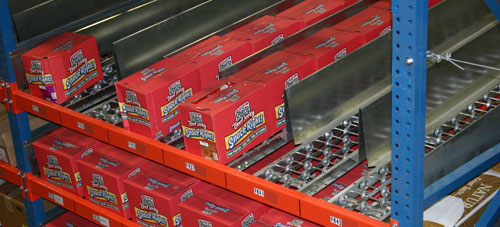
Walk into any order fulfillment operation, and you will see gravity flow rack.
The reason is obvious–it’s one of the best ways to pick orders utilizing first-in, first-out principles. It used to be that there was one kind of the stuff, the plastic-wheel tracks, but these days the choices are more diverse than ever. For the most part, these flow rack types act the same; they decline toward the picker and boxes or totes or even larger components flow toward him. They’re restocked from the rear and picked from the front onto a takeaway conveyor line, a cart, workstation, or another step in the process.
Read the rest of this entry »
Tags: order fulfillment, Supply Chain, carton flow, gravity flow rack, distribution center, Unex, Keneco, Conveyor, picking systems, warehousing, Material Handling, Hytrol
Posted in Order Picking & Fulfillment|
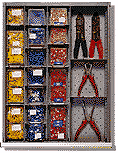 Something we often recommend to save space for our clients is modular drawer storage — for certain operations, in particular those with components, assorted small parts, hardware, or even tool storage, we’re talking about recouping 50% -70% of floor space. Once people have ’em, they love ’em.
Something we often recommend to save space for our clients is modular drawer storage — for certain operations, in particular those with components, assorted small parts, hardware, or even tool storage, we’re talking about recouping 50% -70% of floor space. Once people have ’em, they love ’em.
But there is more than one way to skin that cat. You can configure different kinds of cabinets to do different jobs. There are hundreds of possible combinations of drawer styles and sizes. Another wrinkle is what happens when you can merge the drawers with steel shelving. It can be new, it can be some you are already using. It begs the question: when is it better to have a cabinet, and when is it better to use shelving and compartmentalized drawer inserts?
Read the rest of this entry »
Tags: security, space savings, tool storage, Industrial Shelving, small parts, modular storage, warehousing, Material Handling
Posted in Storage, Organization & Workstations|
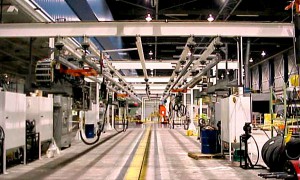
There are many issues of productivity and safety that are stressed as the heat rises. As temperatures start to rise, it gets particularly hot in industrial facilities, warehouses, shops, and distribution centers where air conditioning isn’t always present, extremely costly, or very effective. Experts say that employee productivity increases when ambient temperatures are comfortable and plummets when they aren’t. Error rates climb and safety is compromised as workers fight through hot, sweaty conditions. Here are some ways you can go about combating the rigors of summer.
Read the rest of this entry »
Tags: warehousing, Material Handling, industrial safety, heat stress, heat exhaustion, industrial fans, climate control, fans, Conveyor
Posted in Safety & Ergonomics|

Unguarded rack is dangerous if there are people working in the aisles below. Safety managers know this, insurance companies know it, and if you have rack in your facility, you probably know it too. You have probably seen pallets break. You’ve seen drivers make mistakes when loading & unloading. We’ve seen things fall. If you’ve been in the business any length of time, you may have walked into your warehouse in the morning to find a case of something from the fourth level split open on the floor.
Read the rest of this entry »
Tags: Material Handling, Pallet Rack, warehouse safety, storage, industrial accident prevention
Posted in Pallet & Warehouse Racks|

When Hytrol introduced its E24 powered roller conveyor system there was a splash – and rightly so.
E24 is a brushless, gearless, low RPM, high torque motor that drives conveyor rollers reliably and efficiently. The external motor provides exceptional flexibility, superb heat dissipation, and a robustness that cannot be achieved with motors embedded in conveyor rollers. But what really makes E24 superior to the conventional motorized roller conveyor?
Read the rest of this entry »
Tags: Hytrol, Conveying, roller conveying systems, Conveyor, Material Handling, power rollers
Posted in Conveyor Optimization|
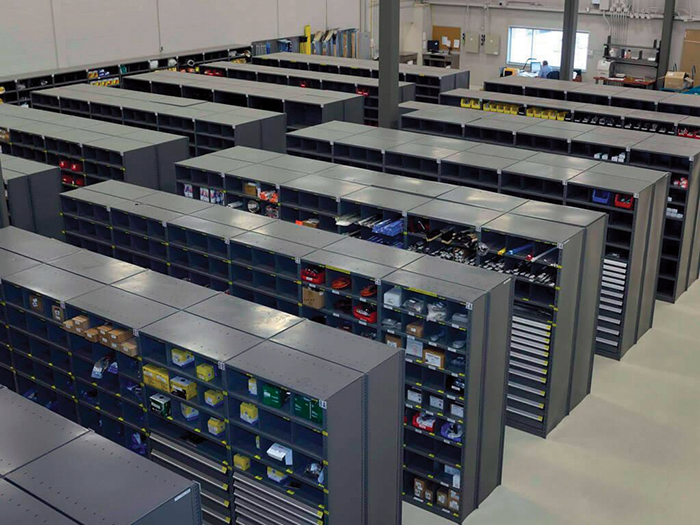
While there are dozens and dozens of shelving manufacturers and even more variations of trade names for them, there are really just three basic kinds of industrial shelving manufactured and broadly used — Rivet-Type, Steel Clip, and Wire. Of course, there are more variations of these shelving types than you can imagine, but most shelving boils down to these kinds.
Tags: Material Handling, industrial storage, shelving, shelves, facility maintenance, interior design, warehousing
Posted in Storage, Organization & Workstations|
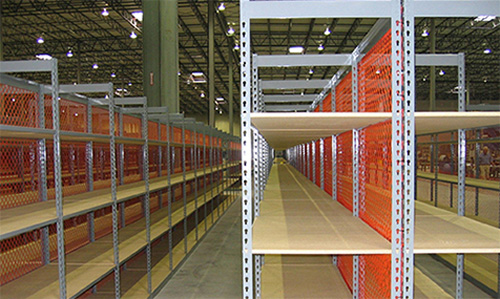
It’s safe to say that there is shelving of some kind in almost every warehousing or other industrial operation, offices, and most commercial facilities. Even a sophisticated distribution center outfitted with AS/RS usually has fallback storage in the form of rack or shelving. For those applications that require a lot of heavy-duty shelving, though, issues of capacity come to the forefront.
Read the rest of this entry »
Tags: warehousing, warehouse safety, Industrial Shelving, storage, records storage, parts bins, archival
Posted in Storage, Organization & Workstations|
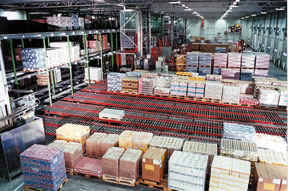
This article is the second in a series of articles on cross docking
In concept and on paper cross docking looks great, but, what about actual implementation? What kind of return do we get on this investment? The short answer is the implementation can be challenging. However, with planning, a committed team of upstream and downstream participants, and pilot programs, it can pay significant benefits.
Cross docking does not have to be complicated. Some, even today, execute cross-docking using human-readable paper documentation as the driver. As mentioned in the original brief, cross docking can cover a wide range of distribution activities. In one door and directly out the other is one approach. Many cross dockers also add value in the brief (hopefully) interval between receiving and shipping. Others send product to a temporary buffer in the interval, in many of these cases an automated system (mini-load, AS/RS, etc.) serves as the buffer.
Read the rest of this entry »
Tags: dock layout, Supply Chain, cross dock, Cross Docking, advance shipping notices
Posted in Docks & Shipping|
Read our customer reviews






 Something we often recommend to save space for our clients is
Something we often recommend to save space for our clients is 




